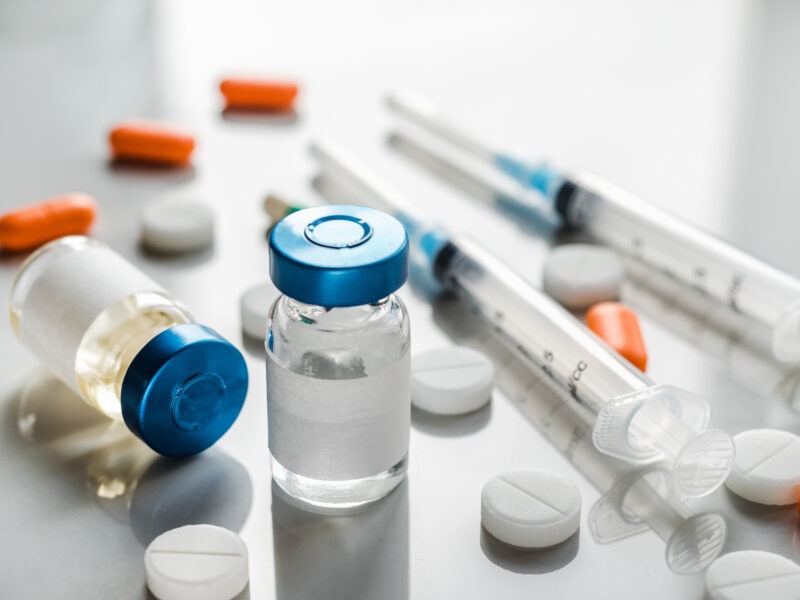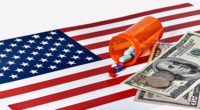What’s Trending in Excipients: The Key Market & Product Happenings
Moderate growth is projected for global excipient market overall, but how does that growth break down by functionality, excipient type, and key geographic segments? DCAT Value Chain Insights takes an inside look.
Crunching the numbers
Market estimates peg solid growth for the global excipients market. The global pharmaceutical excipients market was estimated at $8.37 billion in 2023 and is expected to reach approximately $14.72 billion by 2033, expanding at compound annual growth rate (CAGR) of 5.81% from 2024 to 2033, according to Precedence Research, an Ottawa, Ontario, Canada-based market research and business intelligence firm. By geographic sector, North America dominated the pharmaceutical excipients market with the largest market share of 38.32% in 2023. By excipient type, lactose-based excipients held the highest market share at 41.26% in 2023. By functionality, binders and fillers generated the largest market share at 49.72% in 2023.
Excipient market by functionality
In looking at market revenues by functionality, binders and fillers accounted for $4.16 billion of the global excipients market in 2023, followed by coating agents ($1.48 billion), disintegrants ($921 million), flavoring agents and colorants ($568.8 million), and lubricants and glidants ($300.1 million) in rounding out the top five segments by functionality. Sweeteners accounted for $287.4 million, preservatives and antioxidants $243.9 million, and other excipients collectively $411.6 million, according to Precedence Research.
Fillers and diluents dominated the pharmaceutical excipients market in 2023. Pharmaceutical formulations include fillers for a variety of reasons, including filler shape, concentration, physiological inertness, bulk density, particle size, aspect ratio, low active pharmaceutical ingredient binding capacity, processability, strength, cost-effectiveness, and for physical and chemical stability. Pharmaceutical fillers give structure, influence appearance, and have an impact on other measurable aspects that indicate a product’s intended use. Lactose and microcrystalline cellulose are the most often used diluents for solid dosage forms. Mannitol is used as a replacement when other functional qualities are desired in a formulation.
Market outlook by excipient type
By excipient type, lactose-based excipients were the largest segment, accounting for $3.45 billion in revenues in 2023, followed by cellulose-based excipients at $1.28 billion, starches at $864.9 million, and broadly categorized, fine-chemical excipients at $717.8 million, and biopharmaceutical excipients at $664.9 million to round out the top five excipient types by revenue, according to Precedence Research. Other leading excipient groups include carboxymethylcellulose sodium excipients, which were valued at $508.7 million in 2023, mannitol at $239.1 million, sodium starch glycolate at $178.5 million, and other excipients collectively at $461.7 million.
The lactose-based excipients segment dominated the pharmaceutical excipients market with the largest market share in 2023. Lactose monohydrate serves as a filler and diluent in solid dosage forms, a lyophilization aid in parenteral products, a filler and carrier in inhalation products, and a nutrient and filler in infant formula. Its features include a highly defined material, acceptable physicochemical qualities, odorless taste, widespread availability, low hygroscopicity and stability, low cost, and compatibility with a wide range of active medicinal ingredients and excipients, according to the Precedence Research analysis. A cellulose-based segment is expected to grow at the fastest rate during the forecast period. Microcrystalline cellulose is a popular excipient due to its compressibility attributes and application in solid dosage forms such as tablets.
Excipient market by geographic segments
On a geographic basis, the North America pharmaceutical excipients market was valued at $3.15 billion in 2023 and is projected to surpass around $5.66 billion by 2033, growing at a CAGR of 6.04% from 2024 to 2033, according to the Precedence Research analysis. The European pharmaceutical excipients market was estimated at $2.35 billion in 2023 and is predicted to reach $3.95 billion by 2033, growing at a CAGR of 5.30% from 2024 to 2033. The Asia Pacific pharmaceutical excipients market was estimated at $1.94 billion in 2023 and is expected to grow at a CAGR of 6.53% to reach approximately $3.65 billion by 2033. The pharmaceutical excipients market in the Middle East & Africa is expected to be worth around $454.8 million by 2033 from $294.40 million in 2023, representing a CAGR of 4.44%.
Risk assessment and excipients
On the regulatory front, a recent development of importance relates to the application of risk-management principles for excipients. In April (April 2024), the World Health Organization (WHO) released two draft appendices to a recent update to its guideline on good manufacturing practices (GMPs) for excipients. Last year (2023), WHO proposed updates to its guideline, Good Manufacturing Practices for Excipients Used in Pharmaceutical Products, following deaths in several countries linked to contaminated cough syrups containing unacceptable levels of diethylene glycol and ethylene glycol. In response to those incidents, WHO proposed updates to its guideline relating to GMP for excipients to further detail the application of risk-management principles in the production and control of excipients. The first draft appendix to this guideline, released in late April (April 2024), outlines criteria and key considerations to be used in that risk identification and risk assessment. The second draft appendix provides examples of high-risk excipients that would be subject to risk assessment. These include ethylalcohol (ethanol), glycerol, hydrogenated starch hydrolysate, isopropyl alcohol, maltitol, propylene glycol, and sorbitol. WHO aims to prepare a working document for discussion and possible adoption by the WHO Expert Committee on Specifications for Pharmaceutical Preparations (ECSPP) in the August–September 2024 time frame and to present it at ECSPP’s annual meeting in October (October 2024).





